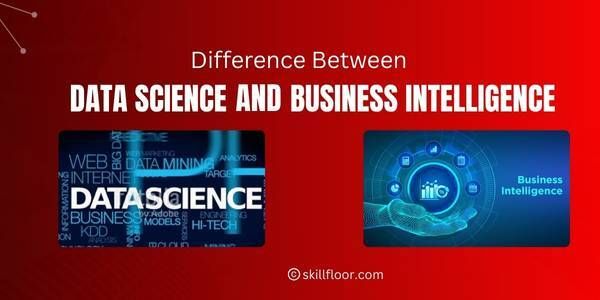Demystifying the Data Science Process
Explore the data science process and demystify its complexities. Learn key steps, tools, and techniques in data analysis, modeling, and decision-making.

In today's data-driven world, data science has emerged as a transformative discipline with the power to unlock hidden insights and drive decision-making across various industries. The data science process is the backbone of this field, encompassing a series of steps that allow data scientists to extract valuable knowledge from raw data.
Problem Definition
The data science process begins with problem definition, a stage often underestimated in its significance but crucial for the success of any data-driven project. At its core, problem definition is about setting the compass for the entire journey, ensuring that data scientists are moving in the right direction to address a specific challenge or opportunity.
In this phase, data scientists engage in close collaboration with domain experts and stakeholders, aiming to gain a deep understanding of the problem at hand. They need to peel back the layers of complexity and ambiguity to distill a clear and concise problem statement. This statement acts as the guiding star, keeping the project focused and aligned with the organization's goals.
Furthermore, problem definition is not just about articulating the problem; it's about understanding its context. Data scientists need to immerse themselves in the industry, business processes, and the broader ecosystem to grasp the nuances surrounding the problem. This context is crucial because it can shape the data collection strategies, the choice of models, and the interpretation of results.
Data Collection
Data collection is a foundational step in the data science process, serving as the critical initial phase where raw data is amassed from various sources. The quality and relevance of the data collected directly influence the quality of insights and decisions that can be derived from it. In this phase, data scientists and analysts work diligently to acquire, retrieve, and assemble data, with a clear focus on meeting the objectives defined in the problem statement.
Data collection is a multifaceted process that can take various forms. It involves identifying suitable data sources, which can include structured data from databases, semi-structured data from APIs, unstructured data from text documents or social media, and even data from IoT devices or sensors. Depending on the nature of the problem, data collection strategies may range from manual data entry to automated data pipelines that fetch data at regular intervals.
One of the primary challenges in data collection is ensuring data quality. This entails addressing issues such as missing values, outliers, duplicates, and errors within the collected data. Without proper data quality checks and cleaning, subsequent stages of the data science process can be compromised, leading to inaccurate analyses and predictions.
Data Cleaning and Preprocessing
Data Cleaning
-
Handling Missing Values: Identifying and addressing missing data points, which can be done by imputing missing values or removing incomplete records.
-
Duplicate Detection: Identifying and removing duplicate entries in the dataset, ensuring data integrity and accuracy.
-
Outlier Detection: Detecting and dealing with outliers that can skew analysis or modeling results.
-
Data Type Conversion: Ensuring that data types are consistent and appropriate for analysis or modeling.
-
Consistency Checks: Verifying that data follows a consistent format and adheres to predefined standards.
Data Preprocessing
-
Feature Scaling: Normalizing or standardizing numerical features to bring them to a common scale, preventing some features from dominating others during modeling.
-
Categorical Variable Encoding: Converting categorical variables into numerical format, such as one-hot encoding or label encoding, for use in machine learning algorithms.
-
Feature Selection: Identifying and selecting the most relevant features to reduce dimensionality and improve model efficiency.
-
Data Transformation: Applying mathematical transformations (e.g., log transformation) to make data more suitable for modeling.
-
Handling Imbalanced Data: Addressing class imbalance issues, especially in classification tasks, to ensure the model doesn't favor the majority class.
Exploratory Data Analysis (EDA)
Exploratory Data Analysis (EDA) is a critical step in the data science process that involves a thorough examination of the dataset to gain a deeper understanding of its underlying structure, patterns, and characteristics. It is often the first step taken after data collection and preprocessing and plays a pivotal role in shaping the subsequent data analysis and modeling tasks. Here's a more detailed explanation of EDA:
-
Data Summarization: EDA begins with a summary of the data using descriptive statistics. This includes calculating measures like mean, median, standard deviation, and percentiles for numerical variables. For categorical variables, it involves counting unique categories and their frequencies. These summaries provide an initial sense of the data's central tendencies and variability.
-
Data Visualization: Visualizing data is a fundamental aspect of EDA. Data scientists create various types of plots and charts to explore the data visually. Common visualization techniques include histograms, box plots, scatter plots, bar charts, and heatmaps. These visualizations help reveal patterns, outliers, and relationships between variables that might not be apparent from summary statistics alone.
-
Distribution Analysis: EDA aims to understand the distribution of data. It involves examining the shape of histograms, probability density functions, and cumulative distribution functions. Identifying whether data follows a normal distribution or other distributions (e.g., exponential, skewed) can influence the choice of statistical methods and models.
-
Outlier Detection: Outliers are data points that significantly deviate from the majority of the data. EDA includes methods for detecting outliers, such as visualization, statistical tests, and domain knowledge. Handling outliers appropriately is crucial as they can distort statistical analyses and model results.
Feature Engineering
Feature engineering is a fundamental and often creative aspect of the data science process. It involves the transformation and selection of relevant features from the raw data to improve the performance of machine learning models. Features, in this context, are the variables or attributes used to make predictions or classifications. The goal of feature engineering is to extract meaningful information from the data, making it more suitable for modeling. Here are some key aspects of feature engineering:
-
Feature Extraction: Feature engineering often begins with feature extraction, where new features are derived from the existing ones. For example, from a dataset containing a date of birth, you can extract features like age, year, month, and day. These newly created features may contain more relevant information for the problem at hand than the original feature.
-
Feature Transformation: Feature transformation involves applying mathematical operations or functions to the existing features to make them more suitable for modeling. Common transformations include scaling features to a standard range, applying logarithmic or exponential transformations, and encoding categorical variables into numerical representations.
-
Feature Selection: Not all features are equally important for modeling, and some may even introduce noise. Feature selection is the process of choosing the most relevant features while discarding less informative ones. This can help simplify models, reduce overfitting, and improve interpretability.
-
Creating Interaction Terms: Interaction terms capture the relationships between different features. For example, in a housing price prediction model, combining the number of bedrooms and bathrooms into a single interaction feature may capture how these two factors jointly influence the price.
Monitoring and Maintenance
Monitoring and maintenance are integral components of the data science process that ensure the continued effectiveness and relevance of machine learning models and data-driven solutions in a dynamic and ever-changing environment. These activities come into play after a model has been deployed into production and is actively making predictions or decisions. Here, we delve into the importance and key aspects of monitoring and maintenance in data science:
Continuous Performance Monitoring Once a model is in production, it needs to be continuously monitored to assess its performance over time. This involves tracking metrics, such as accuracy, precision, and recall, as well as any business-specific Key Performance Indicators (KPIs). Detecting performance degradation early is crucial to maintaining the model's reliability and ensuring it continues to meet the organization's objectives.
Data Drift Detection Data used for model training and testing may evolve over time, a phenomenon known as data drift. Data drift can occur due to changes in user behavior, external factors, or seasonal variations. Monitoring for data drift involves comparing the distribution of incoming data with the distribution of the data used during model development. When significant deviations are detected, it may be necessary to retrain the model with more recent data.
Communication of Results
Communication of results is a pivotal phase in the data science process, often underestimated but of immense significance. At this stage, data scientists transition from their analytical roles to becoming effective storytellers and influencers within their organizations. Here are some key points to consider about the communication of results:
-
Translating Data into Insights: Data, on its own, doesn't hold value until it's translated into meaningful insights. Data scientists must distill complex findings into clear, understandable narratives that resonate with both technical and non-technical stakeholders. Visual aids like charts, graphs, and dashboards are powerful tools in this phase, as they can help convey complex patterns and trends at a glance.
-
Tailoring the Message: One-size-fits-all communication rarely works in data science. The results must be tailored to the audience. Executives may require high-level summaries that focus on business impact, while technical teams may want to dive deeper into methodologies and data specifics. Effective communicators adapt their messages accordingly.
-
Addressing Uncertainty: Data science is inherently uncertain, and results are often probabilistic rather than deterministic. Communicating uncertainty is critical to maintaining credibility. Data scientists should be transparent about the limitations of their models and the potential margin of error in their predictions.
The data science process is a systematic and iterative journey from problem definition to actionable insights. Each step plays a pivotal role in extracting knowledge from data and driving informed decision-making. While this process provides a structured framework, it's important to recognize that data science is as much an art as it is a science. Creativity, domain expertise, and a deep understanding of the data are all essential elements in the quest to transform raw data into valuable insights that can shape the future of organizations and industries.




























































